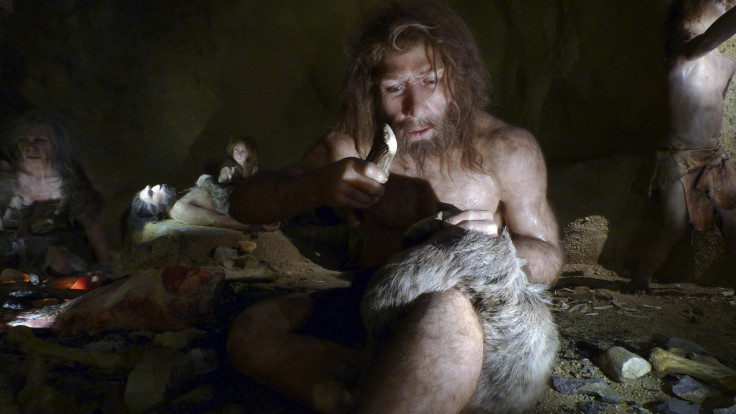Neanderthal Art Discovered for the First Time Shows the Species was Complex

The first piece of art by Neanderthals discovered in a cave seems to prove the species' capacity for complex symbolism and abstract expressions.
A study, published in Proceedings of the National Academy of Sciences, discusses the art which adds another dimension to a species known to bury their dead, adorn themselves with jewels and eat a varied diet, reports Reuters.
The art discovered in Gorham's Cave in Gibraltar overlooking the Mediterranean Sea may not seem complicated given that it displays eight partially crisscrossing lines with three shorter lines on the right and two on the left.
But the scientists say that it required a sharp stone tool to etch the rock, with one line requiring at least 54 strokes and as many as 317 for the entire sign.
In order to understand how the markings were made, the team of scientists made experimental grooves using different tools and cutting actions on blocks of dolomite rock similar to the one at the cave. The method that best matched was one in which a pointed tool or cutting edge was carefully and repeatedly inserted into an existing groove and passed along in the same direction, reports BBC.
This not only rules out an accidental origin for the design but is proof of persistence and determination. The full engraving would have taken an hour to complete.
The team dated the engravings to Neanderthals by dating the stone tools found in the sediments overlying them. The tools belong to a period when Neanderthals had already gone extinct and hence the drawings below were ascribed to them.
The other question is whether the engraving was done on purpose and what that may be. The fact that it was in a very visible location where it stood out to visitors seems to hint at some intention, the team believes. Whether it was a mapping effort, and if the Neanderthals developed artistic abilities without any contact with modern humans is tough to answer.
Some scientists believe that the dates being indirect and coming from the overlying tools rather than the drawing per se places some doubts on independent authorship by the Neanderthals.
"Given the dates also span a period when we know modern humans have reached Europe, a period where we have unresolved 'transitional' archaeological evidence difficult to attribute to either population, I'd be cautious in accepting Neanderthal authorship," Dr Matt Pope, a Palaeolithic archaeologist at University College London told BBC.
However, Prof Clive Finlayson, director of the Gibraltar Museum, says there is no evidence that modern humans made the crossing until much later.
Genomics is expected to narrow the window of doubt.
© Copyright IBTimes 2025. All rights reserved.





















